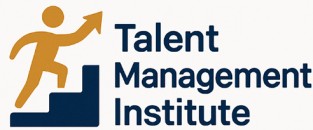
Understanding Employee Assessment
Grasping the Fundamentals of Employee Evaluation
Understanding employee assessment is a crucial aspect of effective talent management. It serves as a foundation for recognizing and nurturing the potential within your team, ultimately driving organizational success. The core purpose of these assessments is to evaluate employee performance, pinpoint strengths, identify areas in need of improvement, and provide constructive feedback. This process not only aids in individual growth but also enhances team performance. A well-structured assessment system is indispensable for management to set realistic performance goals and implement development plans. These plans should also incorporate soft skills, like customer service, as well as technical competencies, to ensure rounded development. One common method involves performance reviews, which should focus on delivering timely and objective feedback. Embedded within these reviews are typically degree feedback mechanisms that provide a holistic view of an employee's capabilities through multiple sources. Additionally, engaging in behavioral assessments can reveal insights into an employee's leadership potential, problem-solving abilities, and other critical soft skills. Such evaluations present opportunities to channel feedback into actionable development plans. However, navigating the complexities of employee assessment is not without its challenges. It's essential to address these hurdles systematically to ensure assessments help rather than hinder an employee's growth. For a deeper understanding of challenging employee types and their impact on the assessment process, consider exploring the complexities often encountered in talent management (source). In comprehending the nuances of employee assessments, organizations not only unlock potential but also cultivate an environment where goals can be consistently met and exceeded.Methods of Employee Assessment
Exploring Diverse Methodologies
In the art of employee assessments, the choice of methodology plays a crucial role in accurately evaluating employee performance and identifying areas for growth and improvement. Different methods can help management gain comprehensive insights into employees' strengths and areas ripe for development.Traditional Performance Reviews
Performance reviews are a staple in many organizations’ assessment processes. These reviews center on evaluating an employee’s past performance and setting future goals. Performance reviews offer an opportunity for team leaders to provide constructive feedback and align individual goals with organizational objectives.360-Degree Feedback
Incorporating multiple perspectives, 360-degree feedback is a method which gathers performance input from an employee’s peers, supervisors, and sometimes even customers. This holistic view can provide valuable insights into soft skills, customer service abilities, and team performance, allowing comprehensive development plans to be created.Behavioral Assessments and Tests
Behavioral assessments focus on understanding how employees behave in certain situations, providing information on how they interact within teams. Skills tests can measure specific competencies, ranging from technical skills to problem-solving abilities, giving a clear picture of strengths areas and possible areas improvement.Technological Integration
Effective employee assessment systems are increasingly incorporating technology with real-time data collection and analysis. These systems ensure timely feedback and can predict potential growth paths for employees. Moreover, they facilitate structured feedback through performance review templates, making the assessment process more efficient and impactful. To learn more about enhancing employee evaluations, consider exploring effective performance review templates. Each method of assessment complements the others and provides a fuller picture of individual and team contributions. Harnessing these tools can lead to improved employee engagement and the strategic development of leadership skills.The Role of Technology in Employee Assessment
The Impact of Modern Tools on Workplace Evaluations
In today's fast-paced corporate environment, technology plays a pivotal role in transforming the way organizations measure and enhance employee performance. Utilizing innovative tools and software has allowed companies to streamline their employee assessments and gain more accurate insights into performance metrics.
Modern assessment systems offer capabilities such as real-time feedback collection and advanced analysis, which are crucial for tailoring development plans. These systems facilitate prompt evaluations, enabling organizations to provide timely feedback that supports continuous improvement in employee capabilities and team dynamics.
The integration of technology into the assessment process not only aids in identifying strengths areas and areas for improvement, but also enhances the reliability of performance reviews. For example, behavioral assessments and soft skills evaluations can be effectively executed with digital tools, providing a more comprehensive picture of an employee's overall contribution.
- Advanced analytics help management in setting clear goals for growth and development.
- Data-driven insights from performance assessments help align individual objectives with strategic business aims.
- Customized evaluation tests ensure a nuanced understanding of an employee's specific skills and potential for leadership.
Another advantage of incorporating technology is the use of 360-degree feedback platforms. These platforms enable constructive feedback from peers, management, and subordinates, promoting a well-rounded view of individual and team performance. Through efficient data collection and analysis, businesses can foster employee engagement by involving them in ongoing strategic planning processes. To explore more about the importance of employee involvement in strategic planning, read further on the Talent Management Institute's blog.
Common Challenges in Employee Assessment
Identifying Common Obstacles in Employee Assessments
Employee assessments are crucial for understanding performance and identifying areas for improvement, but they come with their own set of challenges. These obstacles can hinder the effectiveness of the assessment process and impact employee engagement and development. Here are some common challenges faced during employee assessments:
- Bias in Assessments: One of the most significant challenges is the presence of bias, whether conscious or unconscious. This can skew the results of performance reviews and affect the fairness of the feedback provided. Ensuring that assessments are objective and based on clear criteria is essential for accurate evaluation.
- Lack of Timely Feedback: Delayed feedback can diminish the impact of assessments. Employees benefit from timely feedback that allows them to make immediate improvements and adjustments. Regular check-ins and continuous feedback loops can help mitigate this issue.
- Inadequate Assessment Tools: Using outdated or inappropriate assessment tools can lead to inaccurate evaluations. It's important to choose tools that align with the specific skills and competencies being measured, such as behavioral assessments for soft skills or customer service performance.
- Insufficient Training for Managers: Managers play a critical role in the assessment process, yet they may not always be equipped with the necessary skills to conduct effective employee assessments. Providing training on how to deliver constructive feedback and create development plans can enhance the assessment system.
- Resistance to Feedback: Employees may be resistant to feedback, especially if it's perceived as negative. Creating a culture of open communication and emphasizing the role of feedback in personal and professional growth can help overcome this challenge.
Addressing these challenges requires a strategic approach to employee assessments, focusing on clear communication, appropriate tools, and continuous improvement. By doing so, organizations can foster a more effective employee assessment process that supports both individual and team performance.
Linking Assessment to Employee Development
Turning Assessments into Actionable Development Plans
Effectively linking employee assessments to development involves transforming the data from assessments into concrete development plans. These plans should address both the areas of improvement and the strengths identified through performance reviews and behavioral assessments.- Identifying Key Areas: Start by pinpointing the specific soft skills and performance metrics that require enhancement. Whether it’s leadership capabilities or customer service excellence, understanding these key areas is crucial for growth.
- Setting Clear Goals: Develop SMART goals (Specific, Measurable, Achievable, Relevant, Time-bound) based on the assessment data. This provides employees with a clear path for improvement and helps management track progress effectively.
- Leveraging Strengths: While it’s essential to focus on areas of improvement, equally crucial is leveraging strengths areas. Encourage employees to apply their strengths in team settings or leadership roles, enhancing overall team performance and engagement.
- Utilizing Constructive Feedback: Provide timely feedback to employees that is both positive and constructive. Frequent and degree feedback helps reinforce desired behaviors and address areas of concern promptly.
- Continuous Learning Opportunities: Incorporate opportunities for learning and development within the employee's role. This could include training sessions, mentorship programs, or skill-based workshops.
- Monitoring Progress: Regularly review progress with employees, adjusting development plans as necessary to ensure goals remain aligned with organizational objectives. This ongoing assessment process fosters a culture of continuous improvement.













